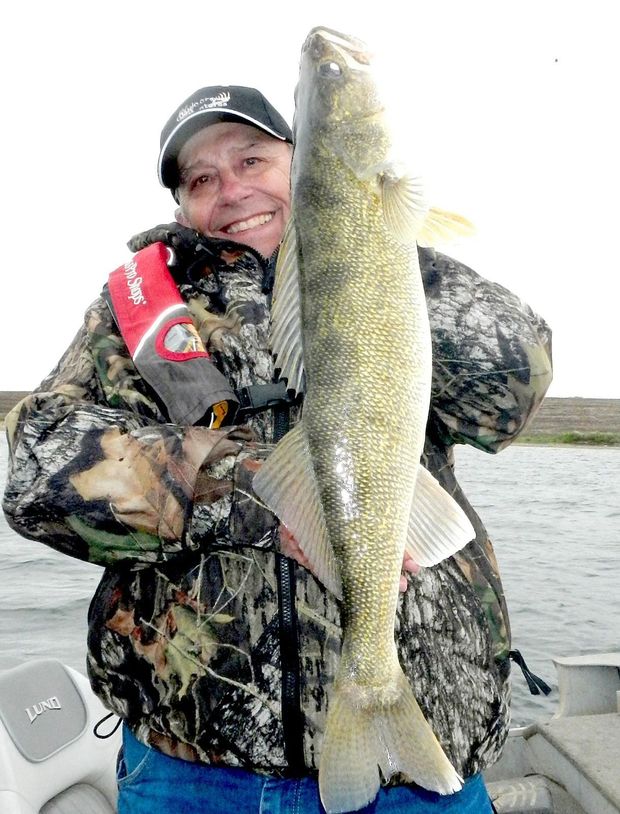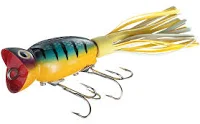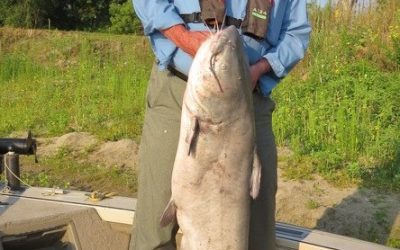Reprinted from the Sioux City Journal
SIOUX CITY | There’s a lot more to keeping bait — minnows or chubs — alive and active than simply tossing them into a bait bucket filled with water.
Minnow baits catch fish best when they are in good condition, not when they are oxygen-starved or stressed by water temperature.
Some minnows, especially shiners, creek chubs and redtails, can be really difficult to keep alive. That’s why you seldom see them in smaller bait shops. Aeration in their tanks has to be spot on, and aeration is expensive.
The biggest mistake you can make is putting too many bait fish in your bait bucket. Overcrowding will cause the bait to begin dying almost immediately.
In the fall months, water cools down and that certainly helps you keep your bait alive. Metabolism slows down in colder water and oxygen requirements are less. That helps. So, rule No. 1 is to keep your bait in cool water. Also, take care not to shock them by removing them from warm water and dunking them quickly into cold water. Add the cold water gradually.
Change the water often in your bait bucket. A couple of things are happening in your bait bucket. One is oxygen depletion. If your minnows are swimming to the surface, they need more oxygen. Dump out the old water and add new. The other thing is, fish release ammonia when they are confined. This can kill them. If you’ve ever had a tropical fish tank, you know about ammonia.
When it comes to baitfish water, I advise reading your fishing regulations carefully regarding the transporting of live bait. In an effort to stem the spread of invasives, many states have changed their laws regarding live bait. For instance, in South Dakota you must not use lake or stream water to transport your bait fish. Instead, you must use bottled water or tap water.
If you use tap water, you should remove the chlorine in it before putting in your bait. Pick up a small bottle of dechlorinator liquid from a pet store. One drop will be all you need to add to the bait bucket to ensure chlorine is gone.
The traditional bait bucket was the old galvanized pail with an insert into which the bait was placed. Those buckets have a lid that can be opened and as you lift the insert out, the water drains and you can select your bait fish. The insert can also be removed from the bucket and placed in the water over the gunwale of a boat or off a boat dock. They are still available, but most bait buckets today are made of plastic. They come in a variety of sizes.
Trolling buckets also are popular. They are made of plastic and have a weighted keel so they can be placed in the water while you are trolling, and their self-closing door floats face up.
Some buckets are lined with a foam plastic liner that helps keep bait cool in summer and insulates them in winter. You can add a small aerator and keep minnows alive for days. Just remember to change the water each day or so.
Styrofoam buckets are probably the most common of the bait buckets. They do a good job of keeping bait fresh, but it’s really tough to change water without losing bait.
Portable aerators are a good investment. Most of them use flashlight batteries, and the high end ones are 12 volt. Aerators can be noisy, and that is annoying. Buy one that claims to be quiet. Aerators that emit tiny bubbles are best.
If you plan on keeping minnows or chubs for a long period of time, you should invest in a 110-volt system. As an alternative you can go to a pet shop and obtain an air pump, hose and stone. That would be much more inexpensive, and it works well.
I used to keep a 30-gallon plastic trash container in my garage. I’d fill it a little more than half full with tap water. I’d remove the chlorine with dechlorinination drops robbed from my aquarium supplies, plug in one of my fish-tank air pumps and then add minnows and chubs. I’d start this in late September and keep bait into mid-December. Every couple of days, I’d remove a bucket of water and then add a bucket of fresh.
If you are fishing a lot or catching or trapping your own bait, long-term storage is the answer.
Using fresh, lively minnows and chubs is the secret to catching walleyes in the fall. All your work and effort to ensure they act that way will be worth it.
More information on the outdoor s can be found at http://siouxcityjournal.com/sports/recreation/outdoors/





0 Comments